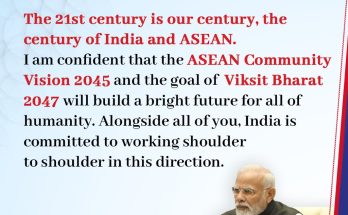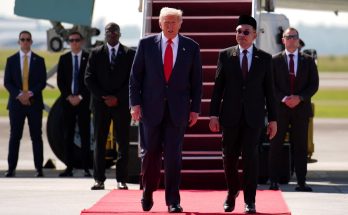 Amid festering strategic distrust between Asia’s rising powers, the defence ministers of India and China are set for wide-ranging talks in Beijing that aim at buttressing trust and promoting enhanced interactions between the two most powerful militaries in the region.
Amid festering strategic distrust between Asia’s rising powers, the defence ministers of India and China are set for wide-ranging talks in Beijing that aim at buttressing trust and promoting enhanced interactions between the two most powerful militaries in the region.
Antony’s Visit to China
A.K. Antony, an Indian politician known for his austere lifestyle, heads to Beijing on a four-day trip July 4 for talks with his Chinese counterpart General Chang Wanquan.
The two ministers are expected to discuss a wide array of issues, including steps to bolster peace and tranquility on the around 4000-km border; enhanced exchanges and interactions between the armed forces of both sides; and issues relating to regional and global security.
The first visit by an Indian defence minister to China in the last seven years has generated much interest in the strategic community in both countries and has acquired an added resonance in the wake of the April 15 incursion by Chinese troops into the Indian territory of Ladakh. The much-publicised border stand-off over ten weeks ago had almost derailed Chinese Premier Li Keqiang’s visit to India in May, but was salvaged at the last minute by intensive diplomacy and a broad in-principle understanding that the relationship between the two rising powers can’t be held hostage by frictions on an undefined frontier.
The Depsang incursion also underscored the need for bolstering military-to-military trust, a key thrust area identified by China’s President Xi Jinping for building stronger India-China relations.
Border Stability
Against this backdrop, Antony would be discussing steps with his Chinese counterpart to give shape to the resolve of their leaders, who met in New Delhi on May 20, to build mutual trust and confidence by promoting enhanced interaction in the military field through increased exchanges between the Army, Navy and Air Force of the two countries.
The two sides, among other things, are expected to finalise the dates of the third joint military training exercise focused on counter-terrorism. The first edition of Hand to Hand joint exercise was held in Kunming in 2007, followed by the second round in Belgaum in India in 2008.
The two countries are also looking to give finishing touches and discuss lingering issues related to a new Border Defence Cooperation Agreement (BDCA) that seeks to buttress confidence-building measures and improve strategic communication to avert Ladakh-like incidents in the future. There are several contentious issues that remain in the way of a final agreement like the Chinese demand for freezing troops deployment on the border, which is not acceptable to India. Highly-placed sources indicate that the Chinese side has come around to accepting India’s concerns, and is no longer pressuring on this point. The Chinese have built military infrastructure deep inside its area and when India started responding with military facilities behind the LAC, the Chinese got jittery and proposed to India a new border defence pact, which Indian military experts consider detrimental to Indian defensive planning at the LAC.
Other issues relate to stopping aggressive patrolling and night patrolling by border troops along the Line of Actual Control, that serves as the de facto border between the two countries. These interlinked issues figured prominently in discussions between India’s National Security Adviser Shivshnakar Menon and China’s State Councillor Yang Jiechi a week ago in Beijing, but much work remains to be done to get differences out of the way. At the end of his talks, Menon had said that while there was “a broad measure of agreement,” there was still “a little bit of work [to do] on the text itself.”
The discussions on regional issues should be watched carefully in the context of the evolving geopolitics of the Indian Ocean and the ongoing contestation over the East Asia architecture. In the talks between the defence ministers of India and China last year, Beijing had made a significant concession by tacitly acknowledging India’s stakes in the East Asia region, which is considered by the powers-that-be in China as their turf.
Unique Defence Relationship
In many ways, this is indeed one of the most unique defence relationship between the two countries in the world, whose armies are facing each other eye- to-eye on the sprawling undemarcated border. Despite the ground realities, they have decided to train together and cooperate in the war against terrorism. While the political and military leaders of the two countries display a lot of bonhomie in New Delhi and Beijing, the armed forces of both nations are making grand strategies to contain each other. At the same time, the two large economies of Asia are also equipping their armed forces with deterrent capabilities as they target each other with nuclear-tipped ballistic missiles.
Despite lingering mistrust of each other’s motives, the two defence ministers are expected to agree on some token steps to show to the world that defence relations are vibrant as they are expected to give green signals on defence exchanges, which will be visible to the international community as a sign of improved level of confidence and friendship between the two countries, which are often portrayed as rivals in the Asian hemisphere. This will include the decision to go ahead with the planned joint army exercises.
At a time when China is facing an image problem over its aggressive behavior with its maritime neighbors, Beijing will seek to flaunt the bonhomie between the two armies to project itself as a benign power trying to forge cooperative relations with its neighbors.
No Miracles, Get Real
From India’s point of view, building friction-free relations with China is an important foreign policy priority as its leaders realize that the country’s energies and enterprise should not detracted from the larger overarching goal of national development. With millions of people still languishing below the poverty line and colossal problems related to underdeveloped infrastructure, India’s foreign policy, despite New Delhi’s growing diplomatic leverage, can be assertive only up to a point. The answer, therefore, lies in building harmonious and cooperative relations with all countries, specially with a large powerful neigbour on its periphery. It was in this context Antony said recently that the negotiations to resolve the disputes between the two countries will take their own time and he did not expect any miracles. “Both are neighbours and we have to work together. There are many areas where our relations are growing and disputes in some areas for which we are trying to find solutions through negotiations,” he underlined.
Author Profile
- India Writes Network (www.indiawrites.org) is an emerging think tank and a media-publishing company focused on international affairs & the India Story. Centre for Global India Insights is the research arm of India Writes Network. To subscribe to India and the World, write to editor@indiawrites.org. A venture of TGII Media Private Limited, a leading media, publishing and consultancy company, IWN has carved a niche for balanced and exhaustive reporting and analysis of international affairs. Eminent personalities, politicians, diplomats, authors, strategy gurus and news-makers have contributed to India Writes Network, as also “India and the World,” a magazine focused on global affairs.
Latest entries
 DiplomacyOctober 4, 2025UNGA Resolution 2758 Must Not Be Distorted, One-China Principle Brooks No Challenge
DiplomacyOctober 4, 2025UNGA Resolution 2758 Must Not Be Distorted, One-China Principle Brooks No Challenge India and the WorldJuly 26, 2025MPs, diplomats laud Operation Sindoor, call for national unity to combat Pakistan-sponsored terror
India and the WorldJuly 26, 2025MPs, diplomats laud Operation Sindoor, call for national unity to combat Pakistan-sponsored terror India and the WorldJuly 25, 2025When Fire Ends, Diplomacy Begins
India and the WorldJuly 25, 2025When Fire Ends, Diplomacy Begins India and the WorldJuly 16, 2025Operation Sindoor and its Aftermath: India’s Successful Diplomatic Outreach
India and the WorldJuly 16, 2025Operation Sindoor and its Aftermath: India’s Successful Diplomatic Outreach







